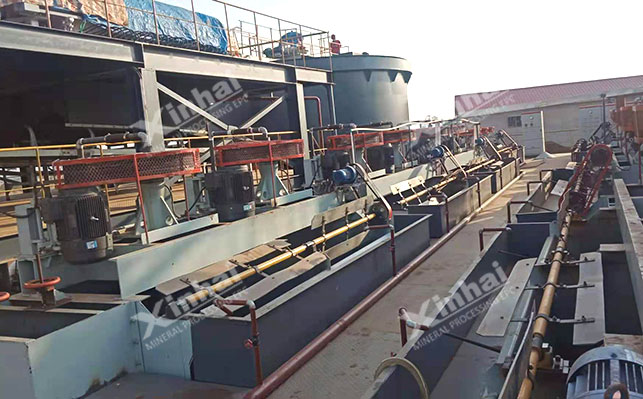Manganese carbonate ore is a type of manganese ore characterized by high manganese, sulfur, silver, lead, and zinc content. It is a mixed native manganese ore with high comprehensive recycling value. The selection methods for manganese carbonate often involve strong magnetic separation and flotation. However, due to the complex composition and fine particle size distribution of manganese carbonate, a single beneficiation method is challenging to achieve recovery targets. Therefore, a combination of beneficiation methods is commonly employed. Here are five common and effective methods for selecting manganese carbonate:

This process is generally applied to sedimentary sulfur-containing manganese carbonate ores. It involves sequential flotation using carbonaceous shale, pyrite, and manganese minerals.
Since manganese carbonate ore is often associated with numerous gangue minerals and has a complex composition, flotation is a suitable method. Flotation can effectively enrich fine-grained manganese carbonate. Positive flotation is commonly used to process manganese carbonate ore. During flotation, a combination of reagents is often used to take advantage of the different characteristics of minerals, improving flotation indicators based on the clear distinction between target minerals and gangue minerals.
This process is typically applied to hydrothermal lead-zinc-containing manganese carbonate ores. The process involves initial flotation of manganese carbonate, followed by strong magnetic separation based on the weak magnetic properties of manganese carbonate and the non-magnetic properties of other gangue minerals.
Magnetic separation has advantages such as small footprint, low energy consumption, low cost, and environmental friendliness. Different magnetic separation methods can be employed for various types of manganese carbonate ores. For instance, wet weak magnetic separation can be used for rough selection of high-iron manganese carbonate ore, followed by high-gradient strong magnetic separation to separate iron and manganese for recovery.
Strong magnetic separation is effective for manganese carbonate ores with high sulfur content, where the main gangue minerals are calcite and pyrite. High-gradient magnetic separators, dry magnetic separators, and wet magnetic separators are commonly used magnetic separation equipment.
After completing the magnetic separation and flotation processes, if the concentrate grade does not meet expectations, leaching can be employed for grade enhancement.
Leaching processes for manganese carbonate mainly include pre-roasting leaching, direct acid leaching, and bioleaching.
Pre-roasting leaching is used for the recovery of high-value manganese resources. It involves reducing high-value manganese to low-value manganese during roasting and then recovering manganese ions in the leaching process.
Direct acid leaching involves the direct action of acid on manganese carbonate ore, leaching out manganese. Parameters such as temperature, solid-liquid ratio, leaching time, and agitation intensity should be carefully controlled during direct acid leaching.
Bioleaching involves the direct or indirect action of microorganisms on target minerals to improve the recovery of target minerals.
Some manganese-rich ores, mainly manganese sulfide ores, can be desulfurized using the roasting method. For some manganese carbonate ores with high sulfur content, the roasting method is used in production to remove volatile components and obtain final ore.
Gravity separation is cost-effective, suitable for a wide range of mineral particle sizes, and has low environmental impact. Manganese carbonate minerals generally have higher density compared to associated gangue minerals, making gravity separation a suitable method for separation.
For manganese carbonate minerals such as rhodochrosite and manganese siderite, a heavy medium hydraulic cyclone can be used for classification. The classified product is subjected to ore washing before entering the jig for gravity separation. However, in some cases, a single gravity separation process may not achieve satisfactory beneficiation indicators, and the combination with other processes such as magnetic separation or flotation may be necessary.
Commonly used gravity separation equipment includes heavy medium separators, shaking tables, jigs, spiral chutes, hydrocyclones, and centrifuges.
These are six commonly used methods for selecting manganese carbonate. A single beneficiation process is often insufficient to achieve satisfactory concentrate indicators. Using a combination of processes can realize the complementary advantages between different processes, improve manganese recovery rates, and enhance overall beneficiation indicators. Additionally, it contributes to the comprehensive recovery of useful minerals associated with manganese carbonate, increasing resource utilization efficiency.